Tactile Vision
Vision works well when we have an overview of the total system, but the way we search in digital media is through little steps, from link to link — a tactile experience as we feel the landscape. We can never see it as a whole because it’s not a continuous space. Instead, we look through a pinhole and build up everything without an overview. This searching function enables us to reduce the amount of chance and encounters, so we can just directly search for something in an extremely focused way and filter out everything else. This machine is the extreme version of we possessing only one sense for one thing. With a pneumatic system made of silicon that reacts to the sensing of light in front of both eyes, the wearer gains stereovision to distinguish directions for navigating in space. Depriving all other sensory experiences and leaving only one signal channel, this hyper-narrow, focused, and filtered vision is an analog version of the searching behavior on the Internet.
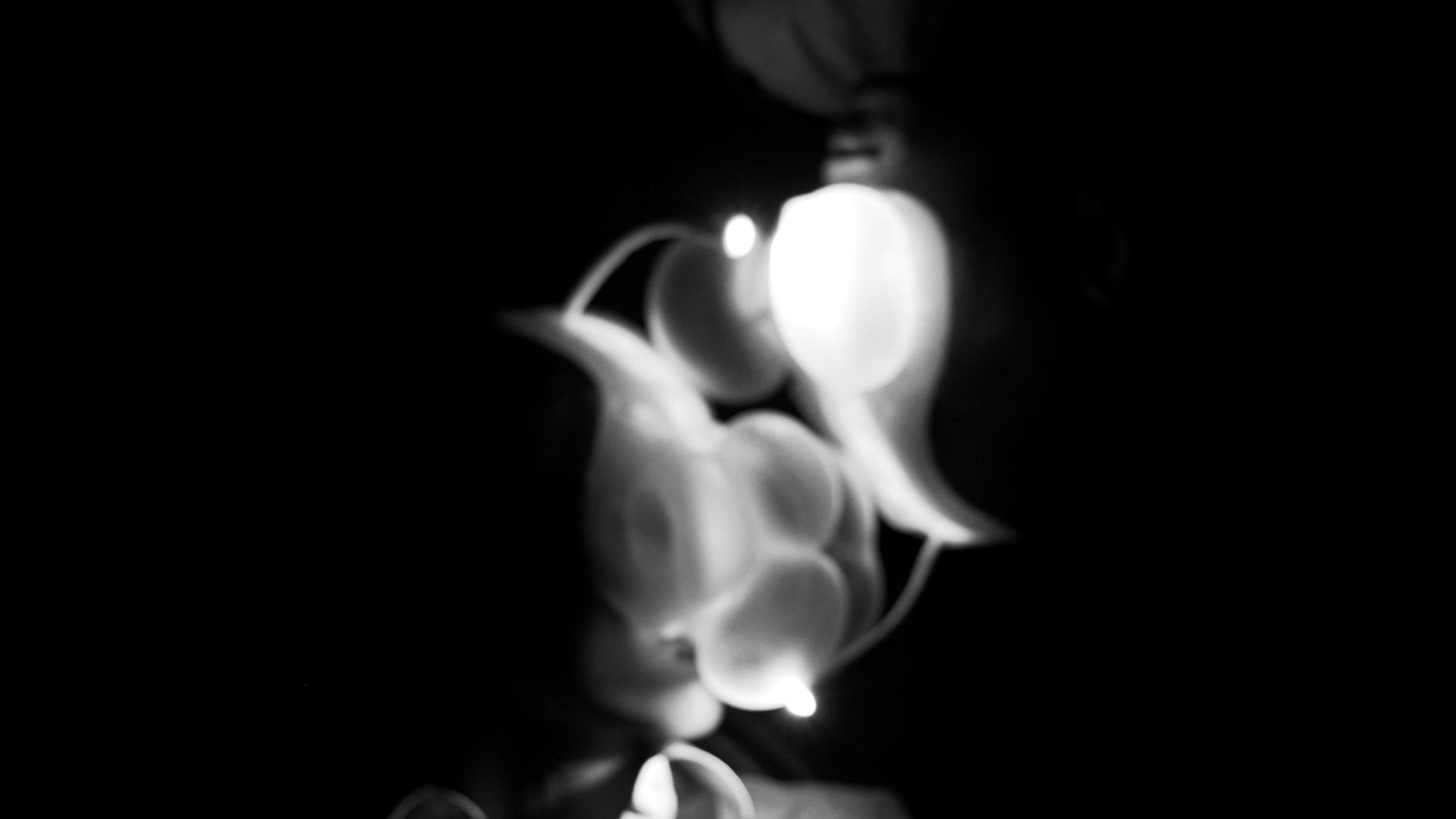
Like a dating App for cave animals.
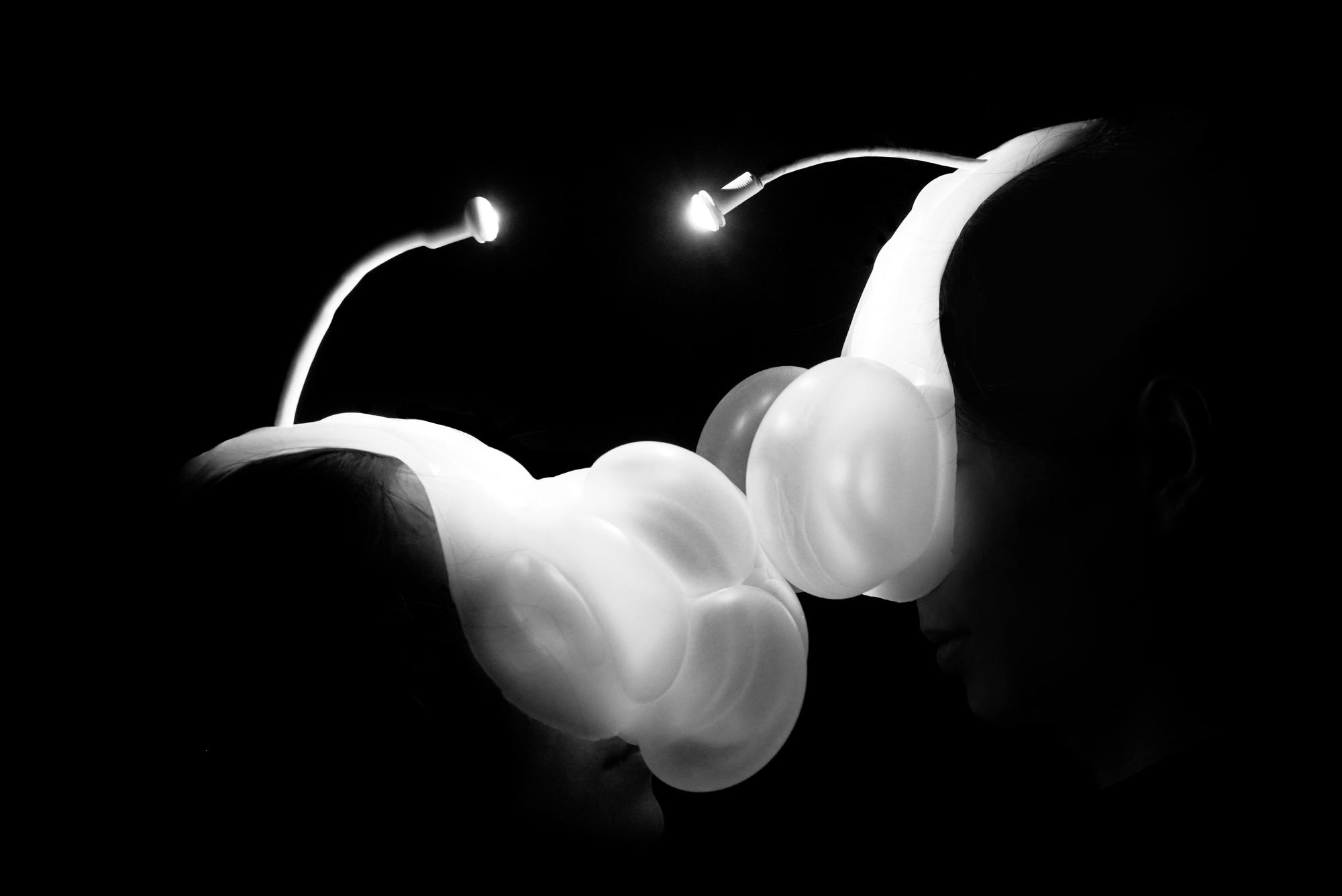
The anglerfish lives in what is easily Earth's most inhospitable habitat: the lonely, lightless bottom of the sea. They have a piece of dorsal spine tipped with a lure of luminous flesh that protrudes above their mouths like a fishing pole, which lures the prey close enough for the anglerfish to devour them whole.
Similar to the predation behavior of the anglerfish, the high intensity light sprouting from the middle of the mask is a cue, or a lure, for others to find them in total darkness. The position of the photodiodes characterizes the wearers’ roles: they are predators when the sensors are close to the center as they adapt to stereovision; they are preys when the sensors are more separated as they attain peripheral vision.
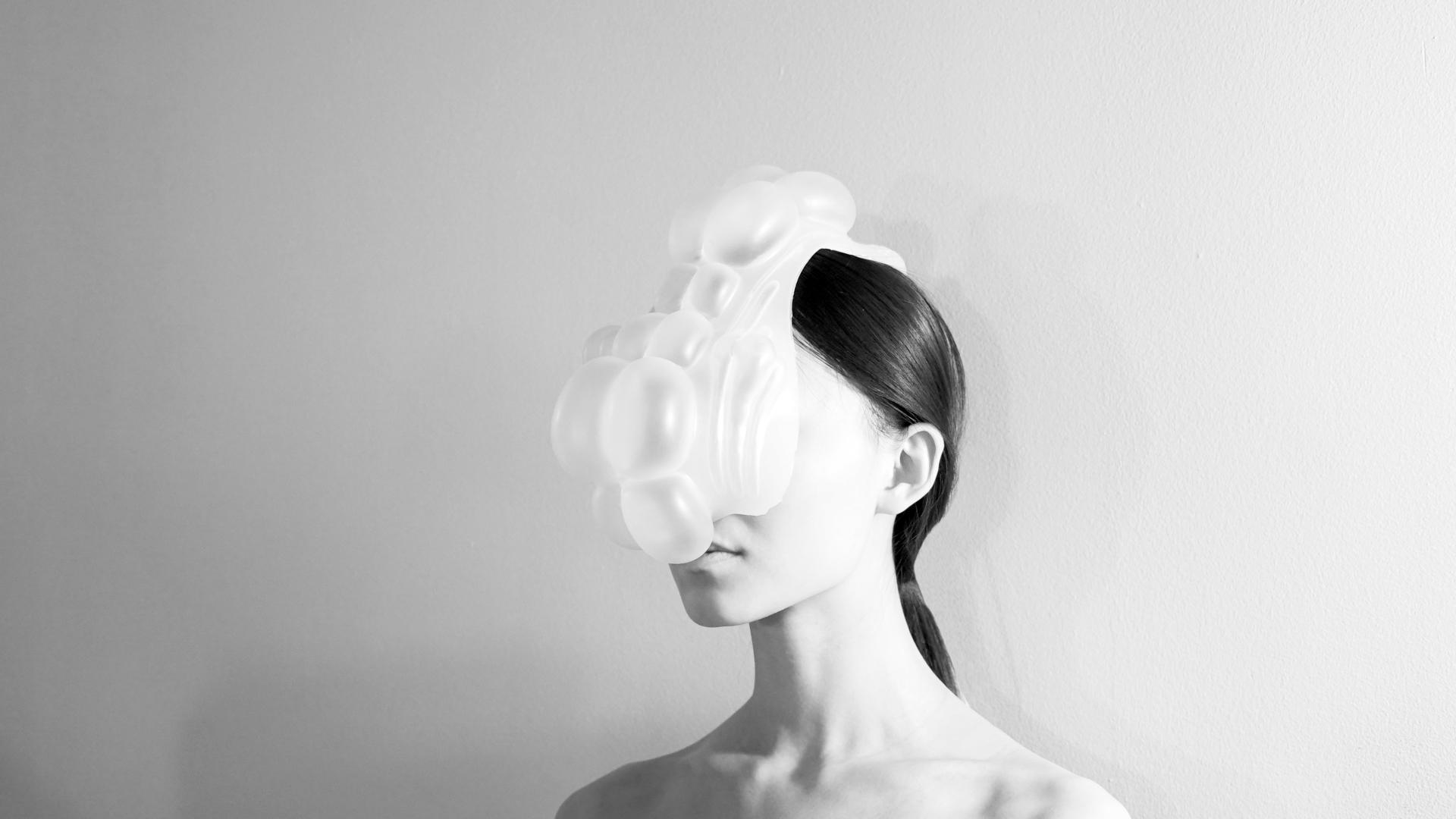
Light, the single signal here, is a communication channel and a trap. Only responding to a single stimuli may be an efficient way to look at things, but may also be a very easy way to get trapped or fooled. Similar to searching, when you are only interested in one thing and only looking for this thing, you loose the capacity to see things in context to make more informed decisions. Like moth into flame, this hyper specialized vision, with light as the only stimuli, is very efficient for what it does, but also very easy to be tricked.
Background
When surfing the Internet, there are two modes of being there: one is wondering around, which happens a lot at the beginning of the internet. One can easily get lost in the vast landscape of information. As media becomes more efficient in delivering information, it gives us the tool — searching — to limit this wondering, hence we become more focused and targeted.

“You can't turn off touch. It never goes away. You can close your eyes and imagine what it's like to be blind, and you can stop up your ears and imagine what it's like to be deaf. But touch is so central and ever-present in our lives that we can't imagine losing it.”
–David Linden


Regardless of our prioritization of the eye, visual observation is often confirmed by our touch.
The buddhist goddess Tara possesses eyes in her hands. These are considered as signs of enlightenment. A tactile vision is concealed in vision.
The door pull is the handshake of a building.
In heightened emotional states and deep thought, vision is usually repressed.
-- Juhani Pallasmaa
Design
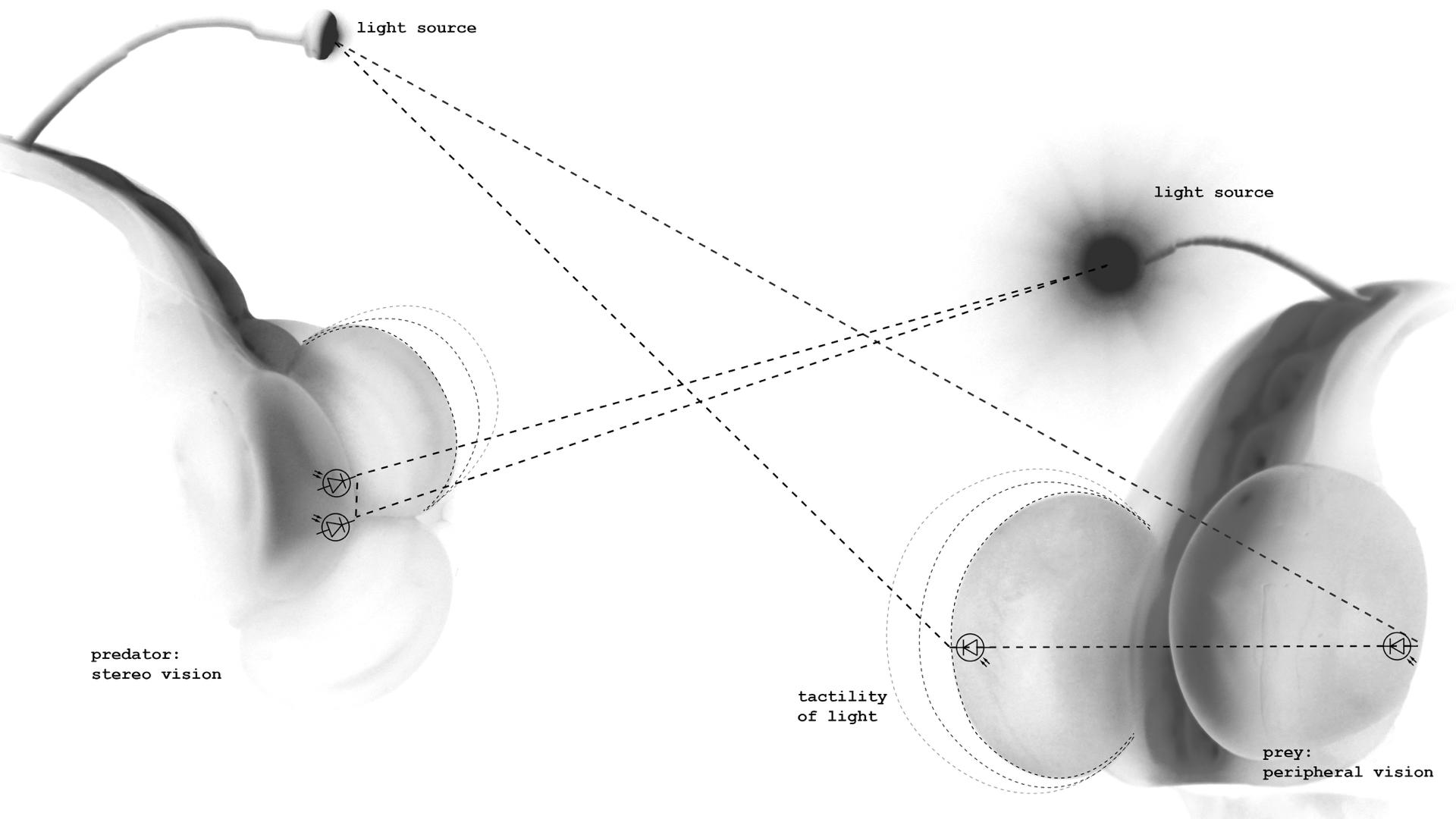
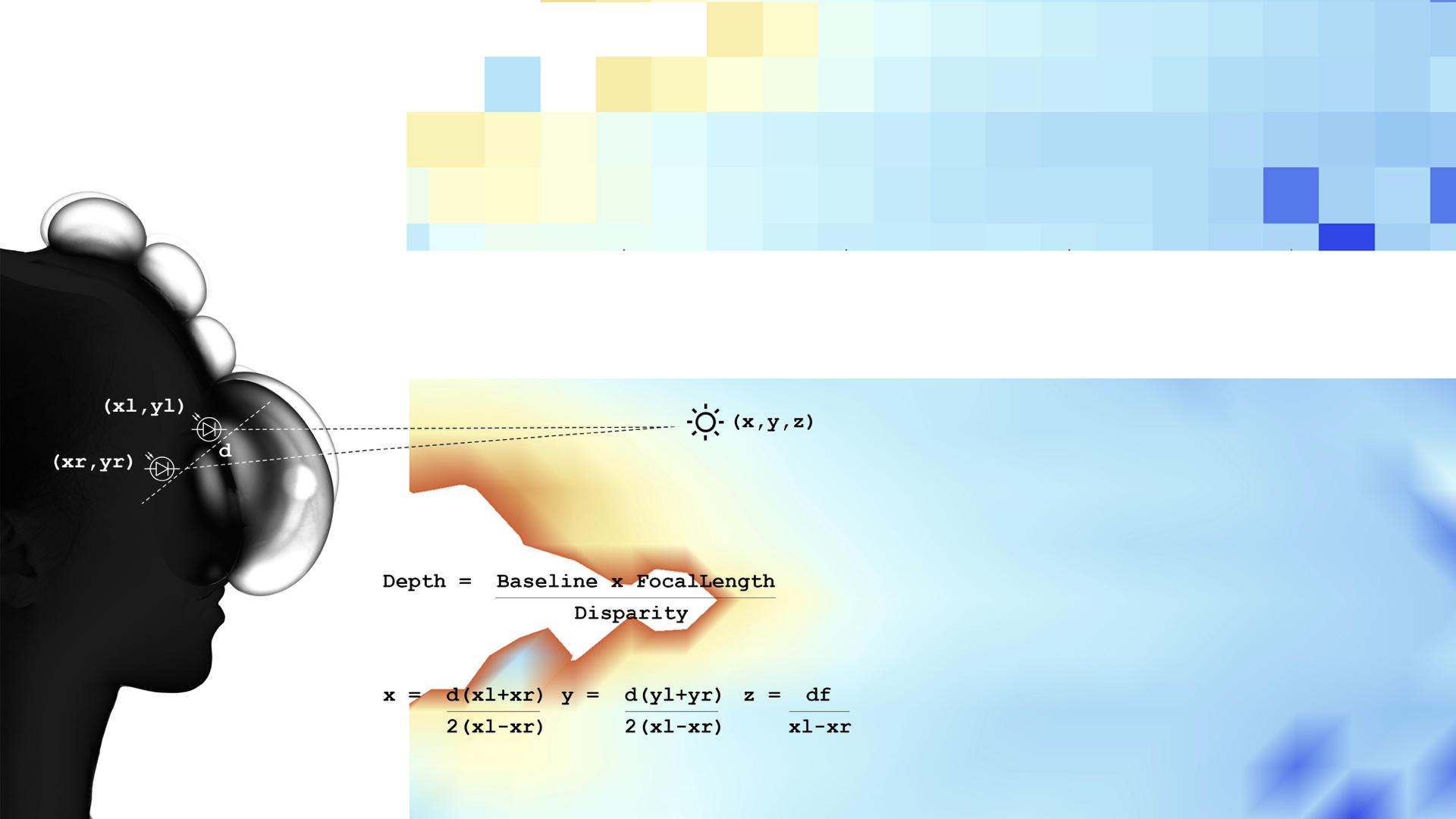
On each side of the eye locates a photodiode to sense the light, and a pneumatic system made with elastomer to react according to the sensor. The mask breathes gently when the light is far away and rapidly as the light gets closer. Like the two eyes we possess, the distance in between the two sensors forms a stereovision, hence the location and depth of the upcoming light can be distinguished.
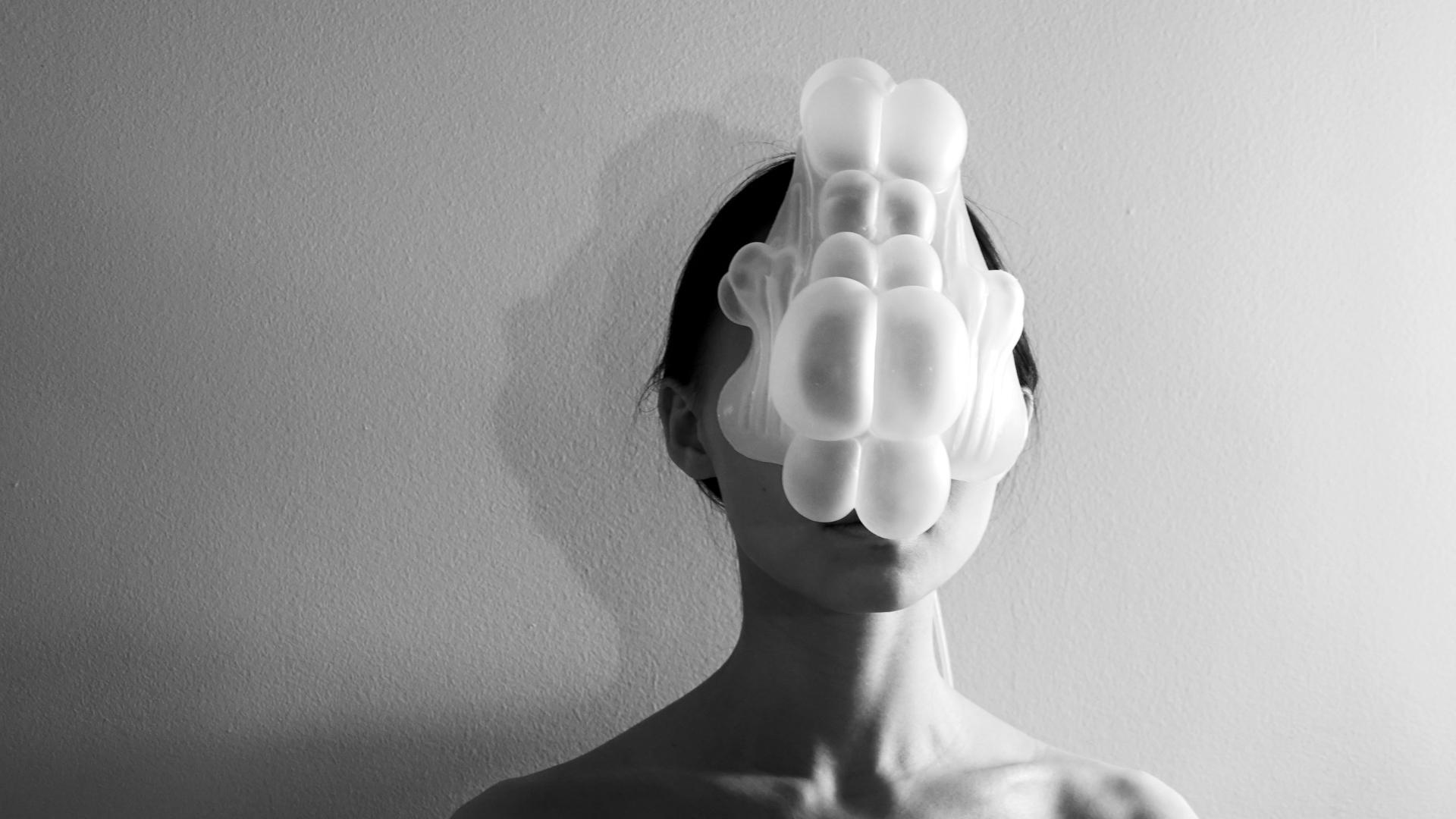
Geometry

The bottom layer of the casted silicone is 1/8 inch thick, and the top layer is 1/16 inch thick. When inflated, this difference in thickness causes the chambers to bulge out and bend. The geometry is designed to be symmetric, with two sets of chambers on each side. One set of chambers is arranged vertically and the other set is arranged horizontally, so that they embrace the shape of the face completely to create a strong tactile feeling when inflated.



Another design is for the preys. It stretches horizontally and bends inward to embrace the eyes.


The laser cut files can be downloaded below.
| inner.pdf | 53 KB | |
| outer.pdf | 41 KB |
Early Version: Optical Fiber
In the early version of the prototypes, I embedded optical fiber inside the elastomer. The optical fibers expand when inflated, and compress when deflated, like a creature with tentacles.


In another version, I combined rigid structure together with soft silicon to support the form. Nature inspired, the "bones" are grown with Diffusion-Limited Aggregation algorithm in Houdini, and then 3D printed with Ultimaker.

The optical fibers respond to the intensity of light sensed. When the light is far away, they breath peacefully. As the light get closer, they breath rapidly and nervously.
An intimate interaction between the two creatures.
After many experiments, I felt the “bones”, the optical fibers, and the silicon bubbles speak very distinct design languages, and they are too strong individually to put them together. So I chose not to include them in the final design.
Fabrication
A general view of the fabrication process, click on the sub-tabs to see details.
1. Laser cut the molds from acrylic sheets, one for top layer and one for bottom layer. Assemble and glue the parts.
2. Mix Ecoflex 00-30 part A and B and pour it into the molds. Mold release and vacuum de-bubble are not necessary here because of the materiality of the acrylic mold and silicon rubber. Keep them on a completely flat surface; otherwise the thickness would be uneven. Evenly distribute the silicone and rub off the excess silicone.
3. Leave the silicone to set and cure in about 2 hours. Use a heat lamp to accelerate the process.
4. Peel off the cured silicone carefully.
5. Assemble the tube into the reserved channels. Use a little amount of uncured Ecoflex 00-30 to glue the top and bottom parts together. Apply some mold release on the thin air channels to prevent them from clogging together. Carefully squeeze out all the air bubbles; otherwise they become the weak point during inflation. Use Ecoflex 00-35 if this process can be done in 2 mins. Wait for the silicon to cure.
6. Actuate and check for clog and openings. Use a thin rod to pierce clogs and Ecoflex 00-35 to seal openings as needed.
Molding
Materials
- Ecoflex 00-30, Ecoflex 00-35 2-part silicone rubber
- Smooth-On Sil-Poxy
- Acrylic sheets for laser cutting (1/4" and 1/8" think)
- Silicon mold release
- Pneumatic tubing
- Smooth-On Skin Tite
- Syringe, mixing cups, lab gloves, stir stick, pump

Fabrication Process
1. Laser cut the molds from acrylic sheets, one for top layer and one for bottom layer. Assemble and glue the parts.
2. Mix Ecoflex 00-30 part A and B and pour it into the molds. Mold release and vacuum de-bubble are not necessary here because of the materiality of the acrylic mold and silicon rubber. Keep them on a completely flat surface; otherwise the thickness would be uneven. Evenly distribute the silicone and rub off the excess silicone.
3. Leave the silicone to set and cure in about 2 hours. Use a heat lamp to accelerate the process.
4. Peel off the cured silicone carefully.
5. Assemble the tube into the reserved channels. Use a little amount of uncured Ecoflex 00-30 to glue the top and bottom parts together. Apply some mold release on the thin air channels to prevent them from clogging together. Carefully squeeze out all the air bubbles; otherwise they become the weak point during inflation. Use Ecoflex 00-35 if this process can be done in 2 mins. Wait for the silicon to cure.
6. Actuate and check for clog and openings. Use a thin rod to pierce clogs and Ecoflex 00-35 to seal openings as needed.
Material Test
A series of silicone from Smooth-On was tested: Ecoflex 00-20, Ecoflex 00-30, Ecoflex 00-35, Dragon Skin 10 FAST, Dragon Skin FX Pro. The table below compares their key properties. Among them, Ecoflex 00-30 has a low shore hardness which makes it a very stretchable and flexible material. It’s tensile strength and elongation at break is higher than Ecoflex 00-20 so that it’s harder to break while inflated. Its low mixed viscosity comparing to Dragon Skin series makes it easier to mix and pour. From a series of experiments, Ecoflex 00-30 turns out to be the most suitable one for making this mask. Ecoflex 00-35 has the same properties as Ecoflex 00-30, but with very short cure time and an off-white color. This makes it a better candidate for gluing and repairing holes.

Automation
A three-way solenoid valve controls the pneumatic system. When the signal of the solenoid and air pump are high, air generated from air pump flows into the silicon rubber to inflate the mask; when the signal of the solenoid is low, the air inside silicon rubber flows out from the valve to deflate. The inflation-deflation rate is determined by the light intensity sensed by the two light sensors. The higher the intensity, the faster the mask breathes. The double-sided PCB is designed with EAGLE and milled with Bantam Tools desktop milling machine.

Materials

The double-sided PCB is designed with EAGLE.

Then milled with Bantam Tools desktop milling machine.
Soldered together.


Testing
A three-way solenoid valve controls the pneumatic system. When the signal of the solenoid and air pump are high, air generated from air pump flows into the silicon rubber to inflate the mask; when the signal of the solenoid is low, the air inside silicon rubber flows out from the valve to deflate. The inflation-deflation rate is determined by the light intensity sensed by the two light sensors. The higher the intensity, the faster the mask breathes. The double-sided PCB is designed with EAGLE and milled with Bantam Tools desktop milling machine.

Materials

The double-sided PCB is designed with EAGLE.

Then milled with Bantam Tools desktop milling machine.
Soldered together.


Context: TransVision
This "Tactile Vision" project is one of the three projects under the topic: "TransVision: Exploring the State of the Visual Field in the Age of Extreme Augmentation" for my Master thesis in Harvard Graduate School of Design, completed in May 2018. It is awarded the Project Prize for Best Thesis, and will be Featured in Platform 11.
For more information, please visit: https://www.jiabaoli.org/transvision/
Abstract
Human perception has long been influenced by technological breakthroughs. An intimate mediation of technology lies in between our direct perceptions and the environment we perceive. Through three extreme ideal types of perceptual machines, this project defamiliarizes and questions the habitual ways in which we interpret, operate, and understand the visual world intervened by digital media.
The three machines create:
Hyper-sensitive vision – a speculation on social media’s amplification effect and our filtered communication landscape.
Hyper-focused vision – an analogue version of the searching behavior on the Internet.
Hyper-commoditized vision – monetized vision that meditates on the omnipresent advertisement targeted all over our visual field.
The site of intervention is the visual field in a technologically augmented society. All the three machines have both internal state and external signal. This duality allows them to be seen from outside and experienced from inside.
Commoditized Vision




Hyper-allergenic Vision Syndrome

The modern society has observed an increase in allergies and intolerances. Hypersensitivities are emerging not only medically but also mentally. Technology has this mutual reinforcement effect that people tend to become less tolerant because they interact even less with people who have different backgrounds and opinions just because of the structure of the Internet’s ability to connect selectively and to filter information. Digital media as mediator reinforce people’s tendency of overreacting through viral spread of information and amplification of opinions, making us hypersensitive to our social-political environment. Similar to patterns of intolerance to signals that we see with our immune system, we also see with our mental responses to our environment, to mental stimulation, and to the distribution of the sensible. Under the current social-political media condition, we device more and more structures in order to aggressively filter this environment both in terms of digital media and in terms of physical interactions like what we eat. By creating an artificial allergy to redness, this machine manifests the nonsensical hypersensitivity devised by digital media.




